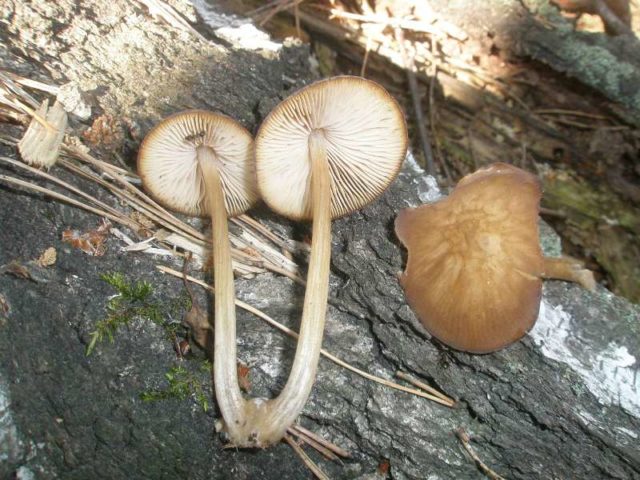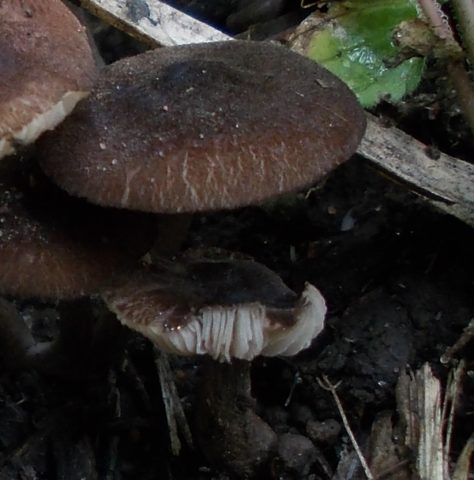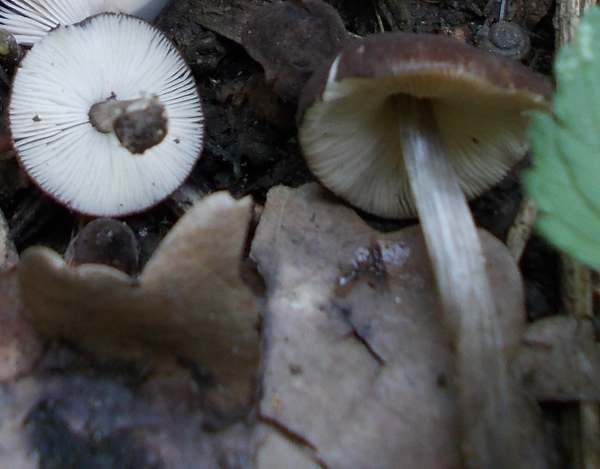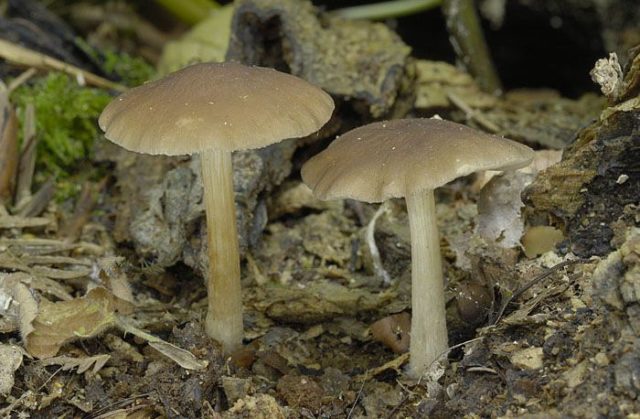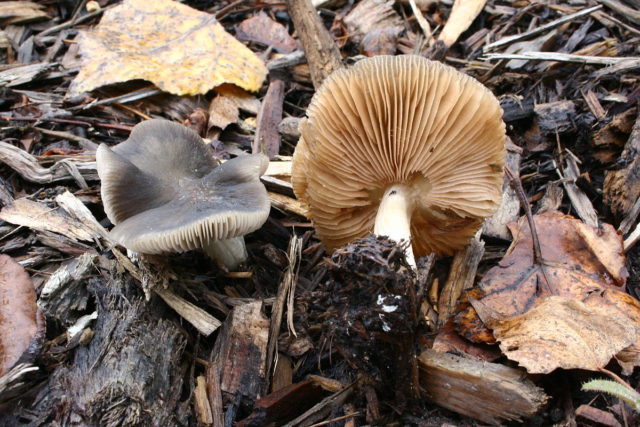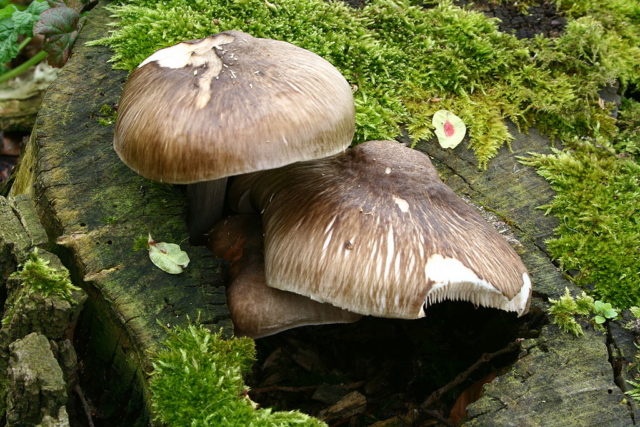Content
There are up to 300 different species in the Pluteyev mushroom family. Of these, only about 50 species have been studied. The mud-legged (small-caped) roach belongs to the species Pluteus podospileus of the genus Pluteus and is one of the poorly studied fruiting bodies.
What does a dirty-legged rogue look like
This is a rather small mushroom, up to 4 cm high, very similar to meadow mushrooms. It is important to know the distinctive features so that the inedible whip does not end up among the rest of the fruiting bodies.
Description of the hat
The cap reaches 4 cm in diameter. At the beginning of maturation, it is convex, bell-shaped, then gradually becomes flat, with a small tubercle in the middle. The color changes from brown to dark brown. The surface is covered with small sharp scales. Ribbed edges with inconspicuous transparent stripes. On the inner side are white, slightly pinkish radial plates. The white pulp has a faint odor.
Leg description
The low, but dense, light gray legs of the mud-legged spit are only 0.3 cm in diameter. Towards the base, they slightly thicken, darken. Dark fibers become visible. Their flesh is grayish, without a pronounced odor.
Where and how it grows
This species loves mixed and deciduous forests and settles on stumps, wood residues, old foliage. Sometimes found in parks, plantings, gardens. Spotted by mushroom pickers in Europe, some Asian countries, for example, Israel, Turkmenistan. We saw him in North America. In Russia, it grows on the territory of the Krasnodar Territory, it is found in the Samara and Rostov regions, on the territory of the West Siberian Plain. The ripening period is from June to the end of October.
Is the mushroom edible or not
In the Pluteev family, most are inedible mushrooms. This is also the dirty-legged rogue. It tastes bitter and is not edible. But nothing is known about its toxicity.
Doubles and their differences
The mud-legged roach is similar to some related mushrooms of its family:
- Dwarf rogue has the same dimensions as the mud-legged one. The hat is also dark brown, but with a chestnut or olive tint. On the velvety surface, covered with dust, radial wrinkled lines are slightly noticeable. Longitudinal plates are located on the inner side. It is inedible, although it smells good.
- Similar to him and veiny. It differs only in an amber-brown cap covered with a network of longitudinal and transverse wrinkles, and an unpleasant odor. Found in the same latitudes as its brethren. Considered inedible due to its small size and offensive odor.
- Another mushroom of the Pluteyev family, similar to the Mudlegs species, is Plutey gray-brown with a gray-brown hat, on which wrinkles are almost not visible. They are distinguished by their light brown plates and fibrous, grayish legs, expanding at the base to 0.7 cm.
It is considered an edible but little-known fruiting body.
Attention! Many mushrooms of the Pluteev family are not eaten. But there are also edible species.Among them are the Plyutei deer with a pinkish cap covered with longitudinal wrinkles, a long and thin leg.
Conclusion
The mud-legged roach has no nutritional value. But this is a saprotroph, which is an irreplaceable link in the ecological chain.
